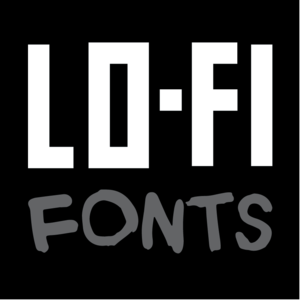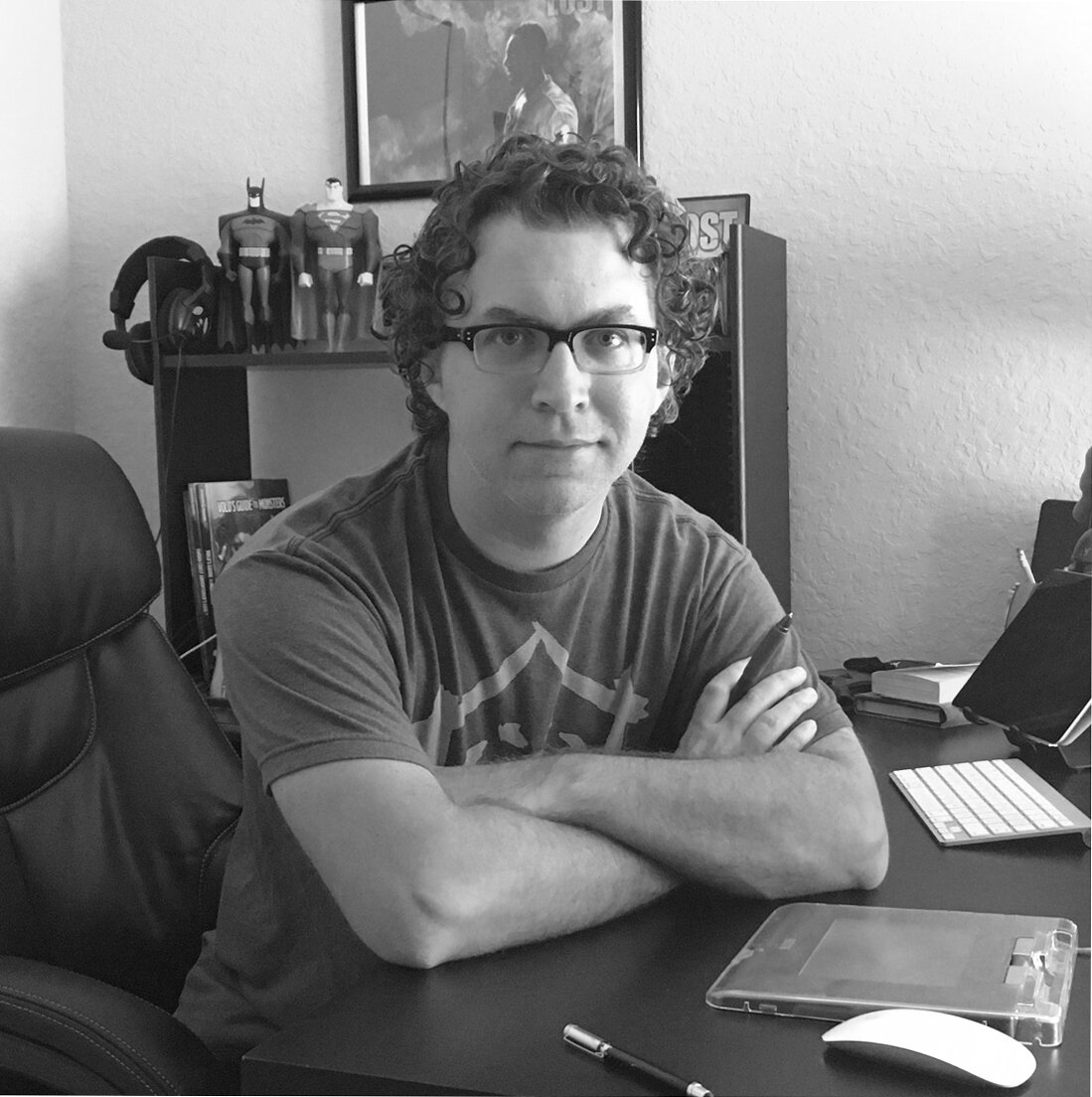Gabriel Cassata is a freelance artist and professional comic book colorist currently living in central Florida.
His work has been published at Image Comics, BOOM! Studios, DC Comics, IDW and Archie Comics among others. His commercial clients have included Lucasfilm, Verizon, Time Warner Cable, Lego and Honda.
Gabriel, we have worked on a few books together over the years and it’s always a delight. You have a versatile style, but regardless of rendering, you always seem to pick the perfect colors. How’d you get your start in comics, and did you always want to be a colorist?
No, I just kind of stumbled into it.
Prior to working full time in comics, I did a lot of visual effects work in Hollywood on a bunch of TV shows and movies. I began as a CG generalist but I quickly discovered that I was getting recognized for my lighting and compositing work. So when I started playing around with coloring pages of line-art I found online as a fun hobby, I realized that all that time spent in VFX was a great training ground for the skills needed to create exciting and compelling comic pages in terms of developing my artist’s eye. And most importantly, it was great fun! I started submitting to publishers and happily began receiving offers. That was about a decade ago and the rest, as they say, is history.
You’re best known for coloring comics, but you also worked on Marvel’s X-Men game. Can you tell us a little bit about that, and are there any differences to working on a game compared to a comic?
That was one of those ‘blue sky’ jobs as I call them whenever offers seem to just drop out of nowhere. I did a little work on some games in the past but I never worked for Fantasy Flight Games before. An art director there found me and asked if I’d like to provide some illustrations for their new game, X-Men: Mutant Insurrection. So of course I jumped at the chance.
The biggest difference between creating art for comics and tabletop games is, in comics, we’re mostly concerned with the impact of the full page, specifically storytelling through panel-to-panel sequential images. With games, like traditional illustration, it’s more about a hyper focus on the impact of individual, stand-alone images. Both are rewarding (and challenging) in their own ways. But really, the biggest difference was I was drawing and coloring all the art, which I don’t get to do often.
What’s the process like working on a game, and how does it compare to comics? Any big differences working with art directors as opposed to editors? One of the things I love about comics is working with a team, do you find that sensation in games?
They have a lot in common from the artist perspective. There’s usually a license holder who has to be satisfied, model sheets for characters and objects to make sure the art team stays on-model and all the usual revisionary back and forth that we know and love from comics. Sadly, the team concept is missing though. I’m one of a dozen disparate artists working independently whose output needs to be on the same page when it’s put together into a cohesive product. That’s the AD’s job and I definitely don’t envy it. It must be like herding cats. But the basic working relationship between artist and art director is nearly identical to comics. Always be nice. Always be professional. Hit your deadlines and you’ll likely get hired again.
You’ve worked with a lot of publishers. Any favorites? Anybody still on the bucket list? How do you juggle them all, and most importantly does Lego send you free kits?
Honestly, everybody has their horror stories but I’ve had such great experiences working with most publishers. You know the importance of working with a great editorial team. When you find an exceptional Ed. or Asst. Ed., treasure the experience knowing you’re being supported in the best possible way. Eric Harburn at BOOM! gave me my first real comics gig on the series, SUPURBIA, with Russell Dauterman. By the end of that 16-issue run, I knew that I wanted to make a career of it.
I’ve flirted with Marvel and DC but aside from some small one-off gigs, I’ve yet to fully crack the Big Two. So that’s still clearly on the career bucket-list. But it just goes to show, you can make a stable career out of working for the other guys. It just requires a lot of hustle. I feel like I’m constantly working on maintaining relationships with editors and other pro’s. And I can’t recommend that enough. I’ve booked more gigs due to good reputation and word of mouth than anything.
I prefer to juggle no more than 3 projects at one time. That seems to be my sweet spot. The key is prioritizing deadlines and I try my best to dedicate any given day’s efforts to only one job. You have to be a good juggler but it works.
And I’ve yet to receive any free Lego kits! Who do I call about that?
Can you dive into the nuts and bolts on how you color a page? What’s step one? How do you decide what colors to use? Anytime I color my own work, I feel lost in the spectrum.
The first step for me is reading the entire script from beginning to end. That helps get my head in the vibe of the story and I start ‘pre-coloring’ pages before I even look at the line-art, if that makes sense. I’m making preliminary decisions about tone based purely on the emotional beats of the story. Then when I get to the pages themselves, I usually have to set them up based on a given publishers technical page specs (or at least confirm they’re correct when they get to me). Everybody seems to do it a little differently. And then they’re off to my flatter. When the pages get back from flatting, I try to start from page 1 and work sequentially. That helps me establish the tonal flow and build towards impactful moments.
I then ‘re-tone’ all the flats as most flatters aren’t concerned with palette, just making separations so finished flats usually look like an explosion at a crayon factory. This initial re-toning helps me create a visual guide for the page. I always like my tonal baseline to begin with the mid-tones. This also helps me stay ‘on-palette’ and avoid any drastic deviations in color that might create a visual speed bump for the reader. Then the hard work is done. All that’s left is the rendering. I work on the whole page at once (not panel by panel). The only time I deviate from this approach is if there is a scene change on a single page. Then I treat them as separate things; fully finishing one scene before starting the other.
For the rendering, I start by adding shadows to the mid’s, then the highlights, rim lights and bounce lights where necessary. Finally, I add in the post effects (VFX terminology there, I guess) like any glow effects, fog, lighting blooms, etc. Some final cleanup, a quick double-check of the script to make sure I didn’t miss anything and it’s on to the next page.
The color choices I make are really informed by the story. And those all go back to the fundamentals of human nature and how we respond to stimulus. For example, I use warm tones for moments of comfort or passion. Cool tones for scenes of fear or isolation, greens and purples for sickness and unease, etc. That kind of thing. It’s all about reinforcing the emotional connections we want the reader to feel.
I try to manage 3-4 pages a day. When deadlines are particularly tight, I shift into overdrive and can do more but, being a new daddy, it’s even more important that I don’t indulge my work-a-holic tendencies too much.
Do you ever get the itch to go back into VFX work?
Not so much. It is a tremendous thrill to see your hard work on screen but I found the creative part of the job takes a backseat to all the technical stuff required to make it happen. My head still hurts from working on the smoke monster from LOST. I’m really proud of the work I did but I started feeling a bit creatively empty. More of a technician than an artist. Comics solved all of those issues and more. I definitely don’t miss those 2-hour, 5-mile LA commutes every day to get to the studio. I much prefer working freelance from a home studio. It opens the door to live pretty much anywhere we want which is nice. I have the freedom to pick and choose the jobs I want to take as opposed to some studio head telling us what we’re working on and hoping we’re into it. Job security is the same performance-based thing that exists in comics but I do miss having all my health insurance and benefits taken care of. Freelance life is like living without a net and it’s definitely not for everybody. It takes a serious work ethic but once you get used to it, it’s very hard to go back.
I ask everyone I interview…If you could only give one piece of advice, be it for coloring or life, what would it be?
I think it’s that old thing about following your bliss. Pick a job you love and you’ll never work a day in your life. Not to say there aren’t challenges and tough days but as a creative person, being creatively rewarded in my work (and life) is the most important thing. And it’s never too late to start. Whatever you’re doing in life, whatever situation you’re in; if you’re not happy – you have the power to make the changes to improve your happiness. Don’t worry too much about money. Money will come. If you take care of the work, the work will take care of you. Sounds pithy but it’s true.
And finally, try not to compare yourself to other people. That road leads to frustration, self loathing and will eventually bury the things that make you unique and special as you tend to alter your creative instincts to look like someone else. Just focus on doing your thing. Even if you’re not seeing the success you want to right now, at least you’ll be uniquely you, not just a clone of [insert name of well known artist here].
Oh, and never read reviews. As tempting as the prospect of public validation is, they will mess with your steering. Even the good ones. Just don’t do it.
That’s way more than one thing but all good advice that’s kept me sane.
Website: https://www.gabrielcassata.com/
Twitter: https://twitter.com/GCassata



